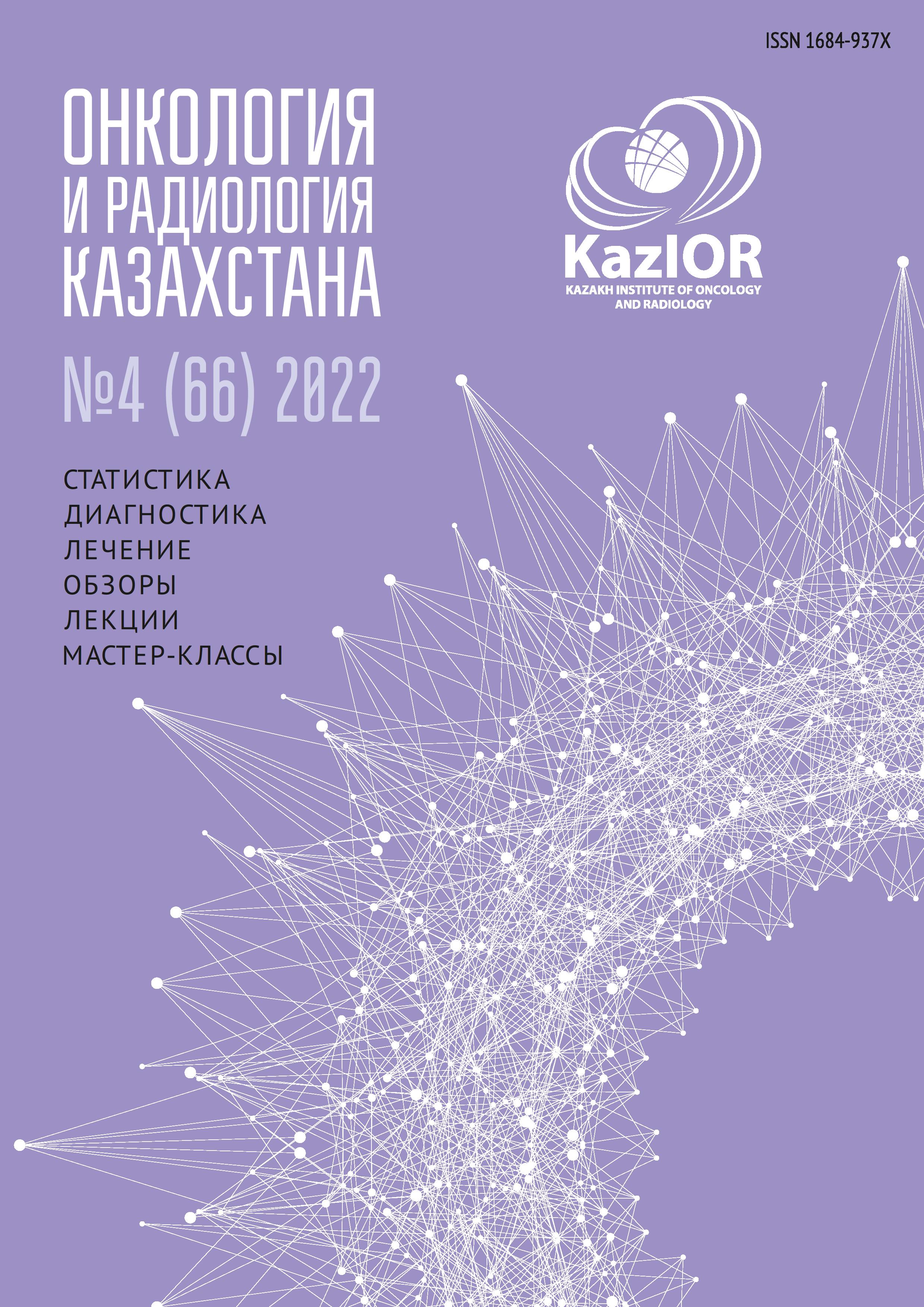Prostate cancer epidemiology in the East Kazakhstan region, 2010-2019
Keywords:
Prostate cancer, morbidity, mortality, survival, East Kazakhstan regionAbstract
Relevance: From 2010 to 2019, prostate cancer morbidity increased, and prostate cancer mortality decreased in Kazakhstan. The peak incidence was observed in patients aged 70 years and older. The East Kazakhstan region had higher morbidity and mortality from prostate cancer
than the national average.
The study aimed to assess the indicators of prostate cancer epidemiology in the East Kazakhstan region from 2010 to 2019.
Methods: The study calculated prostate cancer incidence, mortality, one-year and five-year survival, and early detection from 2010 to 2019.
The statistical significance was assessed by the one-factor linear regression method. Intensive epidemiological indicators were calculated per 100
000 male population.
Results: The prostate cancer incidence in East Kazakhstan increased from 2010 to 2019, while the mortality rate increased slightly. There was a statistically significant upward trend for morbidity (p=0.009) and a statistically insignificant trend for mortality (p=0.900). The one-year survival with prostate cancer tended to decrease. However, the trend of one-year survival rates had no statistical significance (p=0.202). The five-year survival rate of patients with prostate cancer in the East Kazakhstan region during the study period tended to decrease. However, the trend in the five-year survival rates of patients with prostate cancer in the East Kazakhstan region had no statistical significance (p=0.826). Early detection of prostate cancer in the early stages remained sustainable in the range of 72.7-77.4. In 2019, this indicator decreased to 63.2%. The share of prostate cancer cases detected at stage III tended to increase. The proportion of prostate cancer cases detected at stage IV tended to decrease during the study period.
Conclusion: The prostate cancer epidemiological rates in East Kazakhstan were unstable in the study period. The incidence tended to increase; the mortality rate fluctuated within small limits and remained sustainable. The one-year survival rate tended to decrease. The five-year survival rate was slightly increasing. There was an increase in the detection of prostate cancer at stage III, while the detection at stage IV tended to decrease. Early detection of prostate cancer has decreased with an increase in detection at stage III. The proportion of prostate cancer cases detected at stage IV in the study period tended to decrease.

